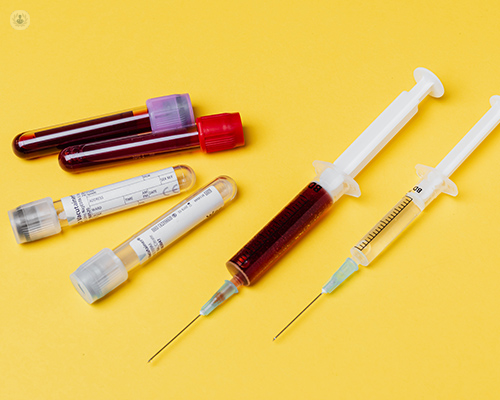Levetiracetam analysis
What is analysed?
Levetiracetam analysis involves measuring the levels of levetiracetam, an antiepileptic medication, in the blood.

What does the result mean?
The result indicates levetiracetam concentration in the bloodstream at the time of testing.
Why might a patient need this analysis?
The analysis is performed to ensure therapeutic levels of levetiracetam are maintained, optimising its effectiveness in managing epilepsy and preventing seizures.
When should the analysis be conducted?
Levetiracetam analysis is typically performed when monitoring treatment efficacy, adjusting the dosage, assessing compliance, or investigating potential toxicity.
What sample is required?
A blood sample is required for levetiracetam analysis, usually obtained through venipuncture.
Is any prior preparation necessary?
No specific preparation is typically required for levetiracetam analysis. However, it's essential to inform your doctor about any medications being taken.
What are the normal values?
Normal therapeutic levels of levetiracetam typically range between 12 to 46 µg/mL.
|
Levetiracetam Level (µg/mL) |
Interpretation |
|---|---|
|
Below 12 |
Subtherapeutic - potential for seizures |
|
12 - 46 |
Therapeutic - optimal seizure control |
|
Above 46 |
Supratherapeutic - risk of toxicity |
Note: Actual values may vary depending on the laboratory and reference range.
What does it mean to have altered values?
- Below normal: Subtherapeutic levels may indicate insufficient dosage or non-compliance, increasing the risk of seizures.
- Above normal: Supratherapeutic levels may suggest overdose or impaired drug clearance, leading to potential toxicity and adverse effects.
By monitoring levetiracetam levels and adjusting treatment accordingly, healthcare providers can ensure optimal seizure management and minimize adverse effects.